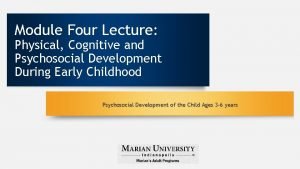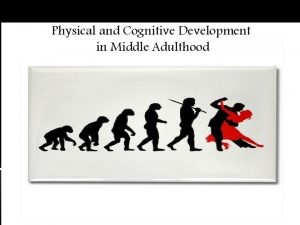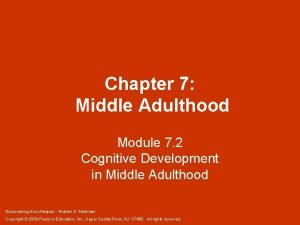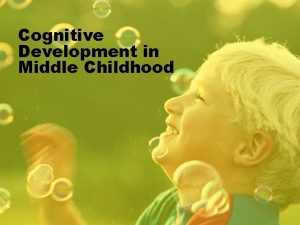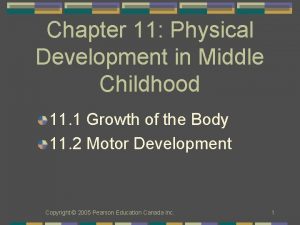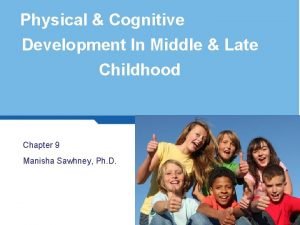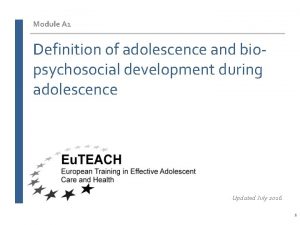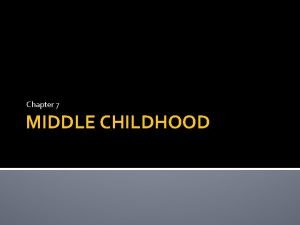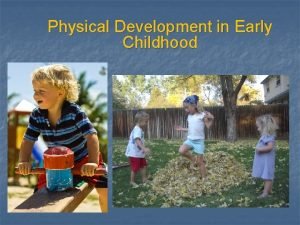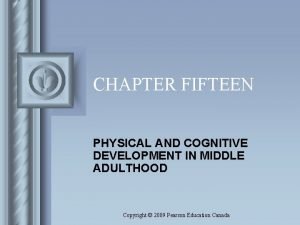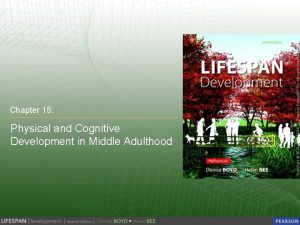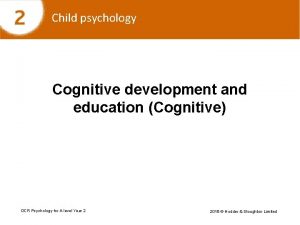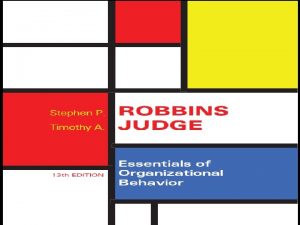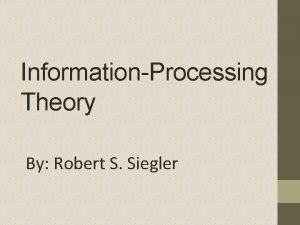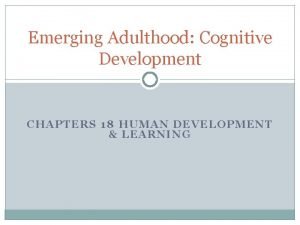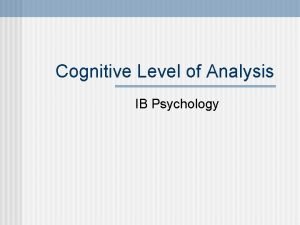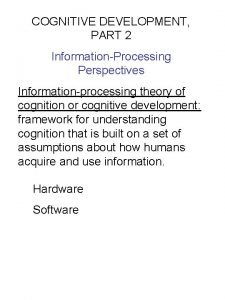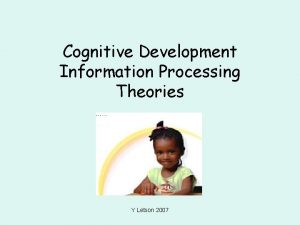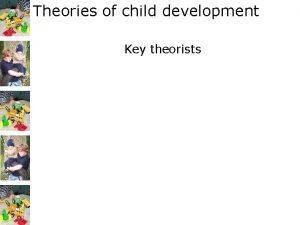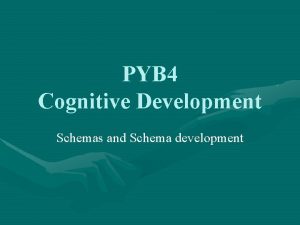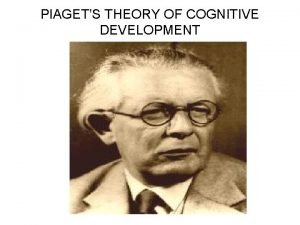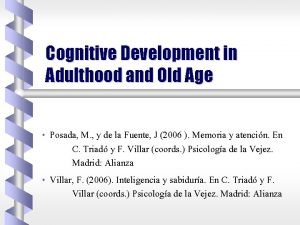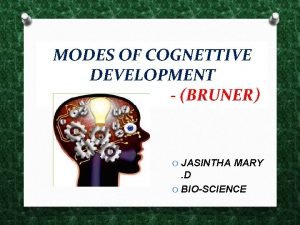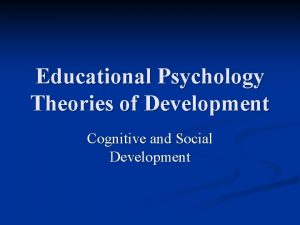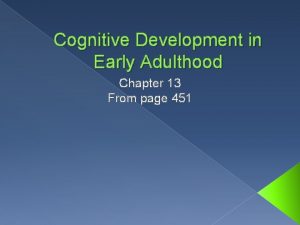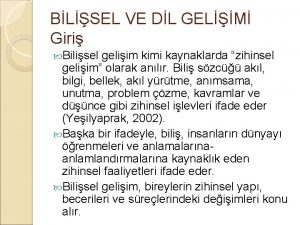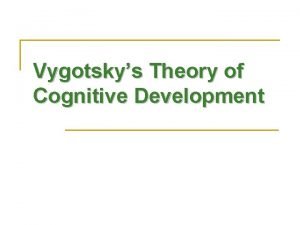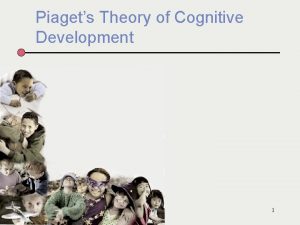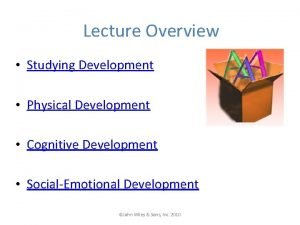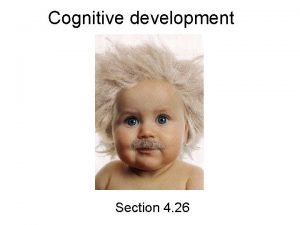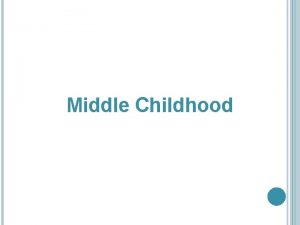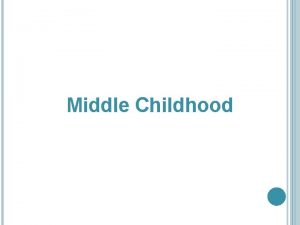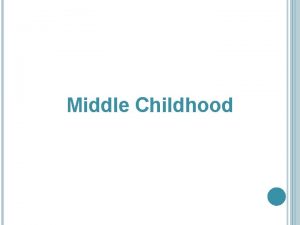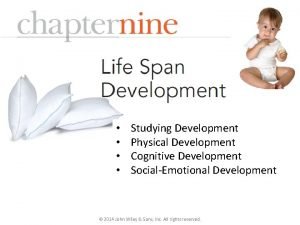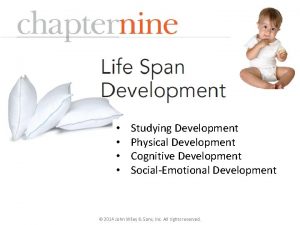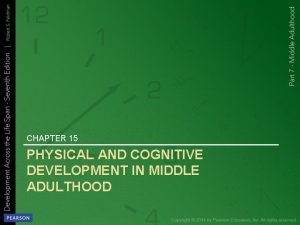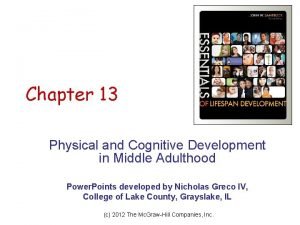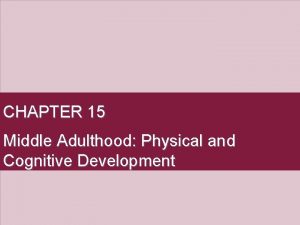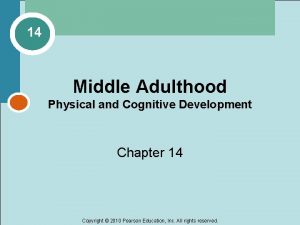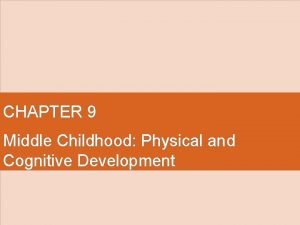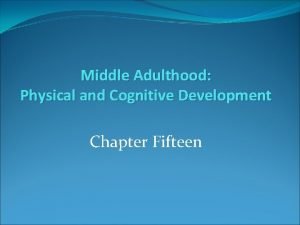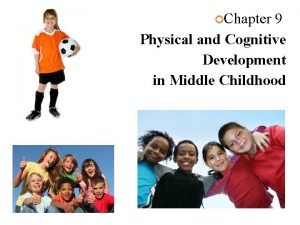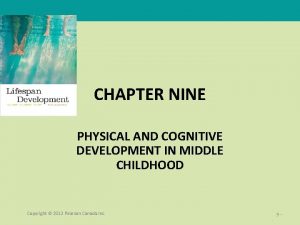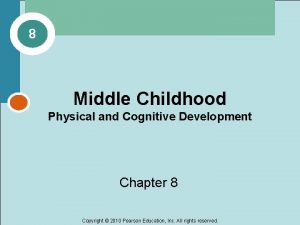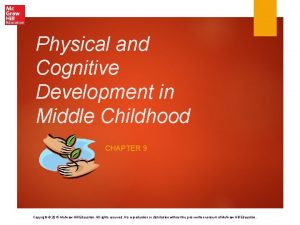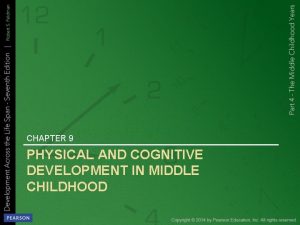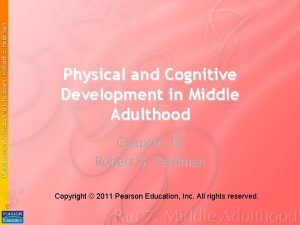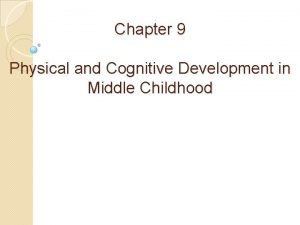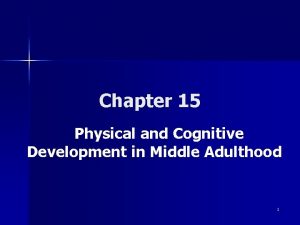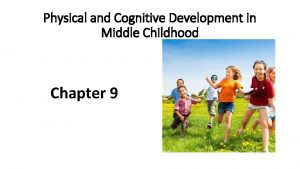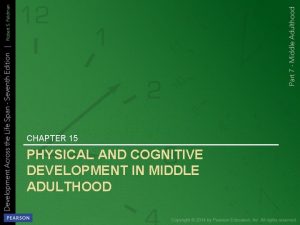CHAPTER 9 Physical and Cognitive Development In Middle



















































- Slides: 51

CHAPTER 9 Physical and Cognitive Development In Middle and Late Childhood

Chapter Outline • • Physical changes and health Children with disabilities Cognitive changes Language development Copyright © 2017 Mc. Graw-Hill Education. All rights reserved. No reproduction or distribution without the prior written consent of Mc. Graw-Hill Education.

Physical Changes and Health • • • Body growth and change The brain Motor development Exercise Health, illness, and disease Copyright © 2017 Mc. Graw-Hill Education. All rights reserved. No reproduction or distribution without the prior written consent of Mc. Graw-Hill Education.

Body Growth and Change • Growth averages 2 -3 inches per year • Weight gain averages 5 -7 pounds a year • Head circumference and waist circumference decrease in relation to body height in middle and late childhood • Bones continue to ossify during middle and late childhood but yield to pressure and pull more than mature bones Copyright © 2017 Mc. Graw-Hill Education. All rights reserved. No reproduction or distribution without the prior written consent of Mc. Graw-Hill Education.

The Brain • Brain volume stabilizes • Significant changes in structures and regions occur, especially in the prefrontal cortex • Increases in cortical thickness • Activation of some brain areas increase while others decrease Copyright © 2017 Mc. Graw-Hill Education. All rights reserved. No reproduction or distribution without the prior written consent of Mc. Graw-Hill Education.

Motor Development • Motor skills become smoother and more coordinated • Girls outperform boys in their use of fine motor skills • Improvement of fine motor skills during middle and late childhood due to increased myelination of the central nervous system Copyright © 2017 Mc. Graw-Hill Education. All rights reserved. No reproduction or distribution without the prior written consent of Mc. Graw-Hill Education.

Exercise • Higher level of physical activity is linked to lower level of metabolic disease risk based on following measures – Cholesterol, waist circumference, and insulin levels • Aerobic exercise benefits: – Children’s attention and memory – Effortful and goal-directed thinking and behavior – Creativity Copyright © 2017 Mc. Graw-Hill Education. All rights reserved. No reproduction or distribution without the prior written consent of Mc. Graw-Hill Education.

Exercise • Ways to get children to exercise – Offer physical activity programs school facilities – Improve physical fitness activities in schools – Have children plan community and school activities – Encourage families to focus more on physical activity Copyright © 2017 Mc. Graw-Hill Education. All rights reserved. No reproduction or distribution without the prior written consent of Mc. Graw-Hill Education.

Health, Illness, and Disease • Middle and late childhood is a time of excellent health • Accidents and injuries – Motor vehicle accidents are most common cause of severe injury • Overweight children – Causes - Heredity and environmental contexts – Consequences - Diabetes, hypertension, and elevated blood cholesterol levels Copyright © 2017 Mc. Graw-Hill Education. All rights reserved. No reproduction or distribution without the prior written consent of Mc. Graw-Hill Education.

Health, Illness, and Disease – Intervention programs • Emphasize getting parents to engage in healthier lifestyles themselves • Feed children healthier food and get them to exercise more • Cardiovascular disease – Uncommon in children but risk factors are present Copyright © 2017 Mc. Graw-Hill Education. All rights reserved. No reproduction or distribution without the prior written consent of Mc. Graw-Hill Education.

Health, Illness, and Disease • Cancer – Second leading cause of death in children 5– 14 years old – Most common child cancer is leukemia – Children with cancer are surviving longer because of advancements in cancer treatment Copyright © 2017 Mc. Graw-Hill Education. All rights reserved. No reproduction or distribution without the prior written consent of Mc. Graw-Hill Education.

Types of Cancer in Children Copyright © 2017 Mc. Graw-Hill Education. All rights reserved. No reproduction or distribution without the prior written consent of Mc. Graw-Hill Education.

Children with Disabilities • The scope of disabilities • Educational issues Copyright © 2017 Mc. Graw-Hill Education. All rights reserved. No reproduction or distribution without the prior written consent of Mc. Graw-Hill Education.

U. S. Children with a Disability Who Receive Special Education Services Copyright © 2017 Mc. Graw-Hill Education. All rights reserved. No reproduction or distribution without the prior written consent of Mc. Graw-Hill Education.

The Scope of Disabilities • 13% of 3 to 21 year olds in the U. S. receive special education-related services in 20112013 • The U. S. Department of Education includes both students with a learning disability and ADHD in the category of learning disability Copyright © 2017 Mc. Graw-Hill Education. All rights reserved. No reproduction or distribution without the prior written consent of Mc. Graw-Hill Education.

The Scope of Disabilities • Learning disability: Difficulty in learning that involves understanding or using spoken or written language, and the difficulty can appear in listening, thinking, reading, writing, and spelling – Dyslexia: Severe impairment in the ability to read and spell – Dysgraphia: Difficulty in handwriting – Dyscalculia: Developmental arithmetic disorder Copyright © 2017 Mc. Graw-Hill Education. All rights reserved. No reproduction or distribution without the prior written consent of Mc. Graw-Hill Education.

The Scope of Disabilities • Attention deficit hyperactivity disorder (ADHD): Characterized by inattention, hyperactivity, and impulsivity – Possible causes • Genetics • Brain damage during prenatal or postnatal development • Cigarette and alcohol exposure during prenatal development • Low birth weight Copyright © 2017 Mc. Graw-Hill Education. All rights reserved. No reproduction or distribution without the prior written consent of Mc. Graw-Hill Education.

Regions of the Brain in which Children with ADHD Had a Delayed Peak in the Thickness of the Cerebral Cortex Copyright © 2017 Mc. Graw-Hill Education. All rights reserved. No reproduction or distribution without the prior written consent of Mc. Graw-Hill Education.

The Scope of Disabilities • Emotional and behavioral disorders: Serious, persistent problems that involve: – Relationships, aggression, depression, and fears associated with personal or school matters – Inappropriate socioemotional characteristics Copyright © 2017 Mc. Graw-Hill Education. All rights reserved. No reproduction or distribution without the prior written consent of Mc. Graw-Hill Education.

The Scope of Disabilities • Autism spectrum disorders (ASD): Range from autistic disorder to Asperger syndrome – Autistic disorder: Onset in the first three years of life • Deficiencies in social relationships, abnormalities in communication, and restricted, repetitive, and stereotyped patterns of behavior – Asperger syndrome: Good verbal language skills • Milder nonverbal language problems • Restricted range of interests and relationships Copyright © 2017 Mc. Graw-Hill Education. All rights reserved. No reproduction or distribution without the prior written consent of Mc. Graw-Hill Education.

Educational Issues • Individualized education plan (IEP): Written statement that is specifically tailored for the disabled student • Least restrictive environment (LRE): Setting that is as similar as possible to the one in which non-disabled children are educated • Inclusion: Educating a child with special education needs full-time in the regular classroom Copyright © 2017 Mc. Graw-Hill Education. All rights reserved. No reproduction or distribution without the prior written consent of Mc. Graw-Hill Education.

Cognitive Changes • • Piaget’s cognitive developmental theory Information processing Intelligence Extremes of intelligence Copyright © 2017 Mc. Graw-Hill Education. All rights reserved. No reproduction or distribution without the prior written consent of Mc. Graw-Hill Education.

Piaget’s Cognitive Developmental Theory • Concrete operational stage – Ages 7 to 11 – Children can perform concrete operations and reason logically, and are able to classify things into different sets – Seriation: Ability to order stimuli along a quantitative dimension – Transitivity: Ability to logically combine relations to understand certain conclusions Copyright © 2017 Mc. Graw-Hill Education. All rights reserved. No reproduction or distribution without the prior written consent of Mc. Graw-Hill Education.

Piaget’s Cognitive Developmental Theory • Evaluating Piaget’s concrete operational stage – Concrete operational abilities do not appear in synchrony – Education and culture exert strong influences on children’s development Copyright © 2017 Mc. Graw-Hill Education. All rights reserved. No reproduction or distribution without the prior written consent of Mc. Graw-Hill Education.

Piaget’s Cognitive Developmental Theory • Neo-Piagetians: Argue that Piaget got some things right but that his theory needs considerable revision – Elaborated on Piaget’s theory, giving more emphasis to: • Information processing, strategies, and precise cognitive steps Copyright © 2017 Mc. Graw-Hill Education. All rights reserved. No reproduction or distribution without the prior written consent of Mc. Graw-Hill Education.

Information Processing • During these years, most children dramatically improve their ability to sustain and control attention • Pay more attention to task-relevant stimuli • Changes in memory, thinking, metacognition, and executive function Copyright © 2017 Mc. Graw-Hill Education. All rights reserved. No reproduction or distribution without the prior written consent of Mc. Graw-Hill Education.

Information Processing • Long-term memory: Increases with age during middle and late childhood – Knowledge and expertise • Experts have acquired extensive knowledge about a particular content area Copyright © 2017 Mc. Graw-Hill Education. All rights reserved. No reproduction or distribution without the prior written consent of Mc. Graw-Hill Education.

Information Processing • Working memory: is a passive storehouse to keep information until moved to long-term memory – Considered to be a mental workbench – One key component is the central executive Copyright © 2017 Mc. Graw-Hill Education. All rights reserved. No reproduction or distribution without the prior written consent of Mc. Graw-Hill Education.

Working Memory Copyright © 2017 Mc. Graw-Hill Education. All rights reserved. No reproduction or distribution without the prior written consent of Mc. Graw-Hill Education.

Information Processing • Autobiographical memory - Memory of significant events and experiences in one’s life – Strategies: Deliberate mental activities that improve the processing of information • Elaboration: Involves engaging in more extensive processing of information • Engage in mental imagery • Understanding the material • Repeat with variation • Embed memory-relevant language Copyright © 2017 Mc. Graw-Hill Education. All rights reserved. No reproduction or distribution without the prior written consent of Mc. Graw-Hill Education.

Information Processing – Fuzzy trace theory: Memory is best understood by considering verbatim memory trace and gist • Thinking – Executive function - Following dimensions of executive function are the most important for cognitive development and school success • Self-control/inhibition • Working memory • Flexibility Copyright © 2017 Mc. Graw-Hill Education. All rights reserved. No reproduction or distribution without the prior written consent of Mc. Graw-Hill Education.

Information Processing – Critical thinking: Reflectively and productively, and evaluating evidence • Mindfulness: Being alert, mentally present, and cognitively flexible • Creative thinking: Ability to think in novel and unusual ways – Come up with unique solutions to problems – Convergent thinking: Produces one correct answer and is characteristic of kind of thinking tested by standardized intelligence tests Copyright © 2017 Mc. Graw-Hill Education. All rights reserved. No reproduction or distribution without the prior written consent of Mc. Graw-Hill Education.

Information Processing – Divergent thinking: Produces many answers to the same question and is characteristic of creativity • Scientific thinking – Asking fundamental questions about reality and – Identifying causal relations Copyright © 2017 Mc. Graw-Hill Education. All rights reserved. No reproduction or distribution without the prior written consent of Mc. Graw-Hill Education.

Information Processing • Metacognition: Cognition about cognition – Metamemory - Knowledge about memory • Executive functioning – Self-control/inhibition – Working memory – Flexibility • Brainstorming: Individuals are encouraged to come up with creative ideas in a group, play off each other’s ideas Copyright © 2017 Mc. Graw-Hill Education. All rights reserved. No reproduction or distribution without the prior written consent of Mc. Graw-Hill Education.

Intelligence • Ability to solve problems and to adapt and learn from experiences – Individual differences: Stable, consistent ways in which people differ from each other – Binet tests • Mental age (MA): Individual’s level of mental development relative to others Copyright © 2017 Mc. Graw-Hill Education. All rights reserved. No reproduction or distribution without the prior written consent of Mc. Graw-Hill Education.

Intelligence • Intelligence quotient (IQ): Person’s mental age divided by chronological age, multiplied by 100 • Normal distribution: Symmetrical distribution – Most scores falling in the middle of the possible range of scores – Few scores appearing toward the extremes of the range – Wechsler Scales - Provide an overall IQ score and yield following composite indexes • Verbal Comprehension Index • Working Memory Index • Processing Speed Index Copyright © 2017 Mc. Graw-Hill Education. All rights reserved. No reproduction or distribution without the prior written consent of Mc. Graw-Hill Education.

The Normal Curve and Stanford. Binet IQ Scores Copyright © 2017 Mc. Graw-Hill Education. All rights reserved. No reproduction or distribution without the prior written consent of Mc. Graw-Hill Education.

Sample Subscales of the Wechsler Intelligence Scale for Children-Fourth Edition (WISC-IV) Copyright © 2017 Mc. Graw-Hill Education. All rights reserved. No reproduction or distribution without the prior written consent of Mc. Graw-Hill Education.

Intelligence • Types of intelligence – Triarchic theory of intelligence: Intelligence comes in following forms • Analytical intelligence • Creative intelligence • Practical intelligence Copyright © 2017 Mc. Graw-Hill Education. All rights reserved. No reproduction or distribution without the prior written consent of Mc. Graw-Hill Education.

Intelligence – Gardner’s eight frames of mind: • • Verbal Mathematical Spatial Bodily-Kinesthetic Musical Interpersonal Intrapersonal Naturalist Copyright © 2017 Mc. Graw-Hill Education. All rights reserved. No reproduction or distribution without the prior written consent of Mc. Graw-Hill Education.

Intelligence • Evaluating multiple-intelligence approaches • Multiple-intelligence views have taken the concept of specific intelligences too far – Culture and intelligence • Interpreting differences in IQ scores • • Influences of genetics Environmental influences Group differences Culture-fair tests: Designed to be free of cultural bias Copyright © 2017 Mc. Graw-Hill Education. All rights reserved. No reproduction or distribution without the prior written consent of Mc. Graw-Hill Education.

Correlation Between Intelligence Test Scores and Twin Status Copyright © 2017 Mc. Graw-Hill Education. All rights reserved. No reproduction or distribution without the prior written consent of Mc. Graw-Hill Education.

Increasing IQ Scores from 1932 to 1997 Copyright © 2017 Mc. Graw-Hill Education. All rights reserved. No reproduction or distribution without the prior written consent of Mc. Graw-Hill Education.

Intelligence • Using intelligence tests – Avoid stereotyping and expectations – Know that IQ is not the sole indicator of competence – Use caution in interpreting an overall IQ score Copyright © 2017 Mc. Graw-Hill Education. All rights reserved. No reproduction or distribution without the prior written consent of Mc. Graw-Hill Education.

Extremes of Intelligence • Intellectual disability: Limited mental ability in which an individual has a low IQ and has difficulty adapting to everyday life – Organic intellectual disability: Caused by a genetic disorder or brain damage – Cultural-familial retardation: No evidence of organic brain damage • IQ is generally between 50 and 70 Copyright © 2017 Mc. Graw-Hill Education. All rights reserved. No reproduction or distribution without the prior written consent of Mc. Graw-Hill Education.

Extremes of Intelligence • Gifted: Above-average intelligence (an IQ of 130 or higher) and/or superior talent for something – Three criteria • Precocity • Marching to their own drummer • A passion to master – Nature-nurture – Domain-specific giftedness and development – Education of children who are gifted Copyright © 2017 Mc. Graw-Hill Education. All rights reserved. No reproduction or distribution without the prior written consent of Mc. Graw-Hill Education.

Language Development • Vocabulary, grammar, and metalinguistic awareness • Reading • Writing • Bilingualism and second-language learning Copyright © 2017 Mc. Graw-Hill Education. All rights reserved. No reproduction or distribution without the prior written consent of Mc. Graw-Hill Education.

Vocabulary, Grammar, and Metalinguistic Awareness • Middle and late childhood – Changes occur in the way children’s mental vocabulary is organized • Similar advances in grammar skills • Metalinguistic awareness: Knowledge about language – Understanding what a preposition is – Being able to discuss the sounds of a language Copyright © 2017 Mc. Graw-Hill Education. All rights reserved. No reproduction or distribution without the prior written consent of Mc. Graw-Hill Education.

Reading • Whole-language approach: Reading instruction should parallel children’s natural language learning • Phonics approach: Reading instruction should teach basic rules for translating written symbols into sounds Copyright © 2017 Mc. Graw-Hill Education. All rights reserved. No reproduction or distribution without the prior written consent of Mc. Graw-Hill Education.

Writing • Parents and teachers should encourage children’s early writing – Not be concerned with the formation of letters or spelling Copyright © 2017 Mc. Graw-Hill Education. All rights reserved. No reproduction or distribution without the prior written consent of Mc. Graw-Hill Education.

Bilingualism and Second-Language Learning • Second-language learning – Bilingualism has a positive effect on children’s cognitive development • Subtractive bilingualism • Bilingual education – Research supports bilingual education Copyright © 2017 Mc. Graw-Hill Education. All rights reserved. No reproduction or distribution without the prior written consent of Mc. Graw-Hill Education.
 Cognitive development in middle and late childhood
Cognitive development in middle and late childhood Cognitive development in early adulthood
Cognitive development in early adulthood Physical development in adulthood
Physical development in adulthood Define physical cognitive and psychosocial development
Define physical cognitive and psychosocial development Cognitive development for middle adulthood
Cognitive development for middle adulthood Cognitive development middle adulthood
Cognitive development middle adulthood Cognitive development in middle childhood
Cognitive development in middle childhood Physical development in middle childhood chapter 11
Physical development in middle childhood chapter 11 Cognitive and non cognitive religious language
Cognitive and non cognitive religious language Late childhood physical development
Late childhood physical development Chapter 5 cognitive development in infancy and toddlerhood
Chapter 5 cognitive development in infancy and toddlerhood Middle adolescence physical development
Middle adolescence physical development Middle adulthood physical changes
Middle adulthood physical changes Physical development in middle childhood
Physical development in middle childhood Physical changes in adulthood
Physical changes in adulthood Kellogg drawing stages
Kellogg drawing stages A vygotskian classroom promotes ________.
A vygotskian classroom promotes ________. Denny's model of physical and cognitive ageing
Denny's model of physical and cognitive ageing Denny's model of physical and cognitive ageing
Denny's model of physical and cognitive ageing Module 47 infancy and childhood cognitive development
Module 47 infancy and childhood cognitive development Cognitive development in education
Cognitive development in education Module 47 infancy and childhood cognitive development
Module 47 infancy and childhood cognitive development The investment of an employee's physical cognitive
The investment of an employee's physical cognitive Intellectual development in older adulthood
Intellectual development in older adulthood Jerome bruner cognitive theory
Jerome bruner cognitive theory What is the information processing theory
What is the information processing theory Postformal thought
Postformal thought Cognitive levels of development
Cognitive levels of development Cognitive development characteristics
Cognitive development characteristics Information processing theory of cognitive development
Information processing theory of cognitive development Information processing theory of cognitive development
Information processing theory of cognitive development Cognitive theory child development
Cognitive theory child development Cognitive development schema
Cognitive development schema Conclusion of piaget's theory
Conclusion of piaget's theory Postformal thought
Postformal thought Conclusion of cognitive development
Conclusion of cognitive development Cognitive theory child development
Cognitive theory child development Piaget's preoperational stage
Piaget's preoperational stage Bruner's theory of cognitive development
Bruner's theory of cognitive development Scaffolding piaget
Scaffolding piaget Cognitive development theory dreams
Cognitive development theory dreams Cognitive changes in early adulthood
Cognitive changes in early adulthood Pendulum problem piaget
Pendulum problem piaget Psychsim 5 cognitive development
Psychsim 5 cognitive development Piaget's stages of cognitive development
Piaget's stages of cognitive development Lev semenovich vygotsky theory
Lev semenovich vygotsky theory Vygotsky theory
Vygotsky theory Development
Development Piaget's theory of cognitive development
Piaget's theory of cognitive development Cognitive development
Cognitive development Theory of mind
Theory of mind Chapter 10 physical development from one to three
Chapter 10 physical development from one to three



